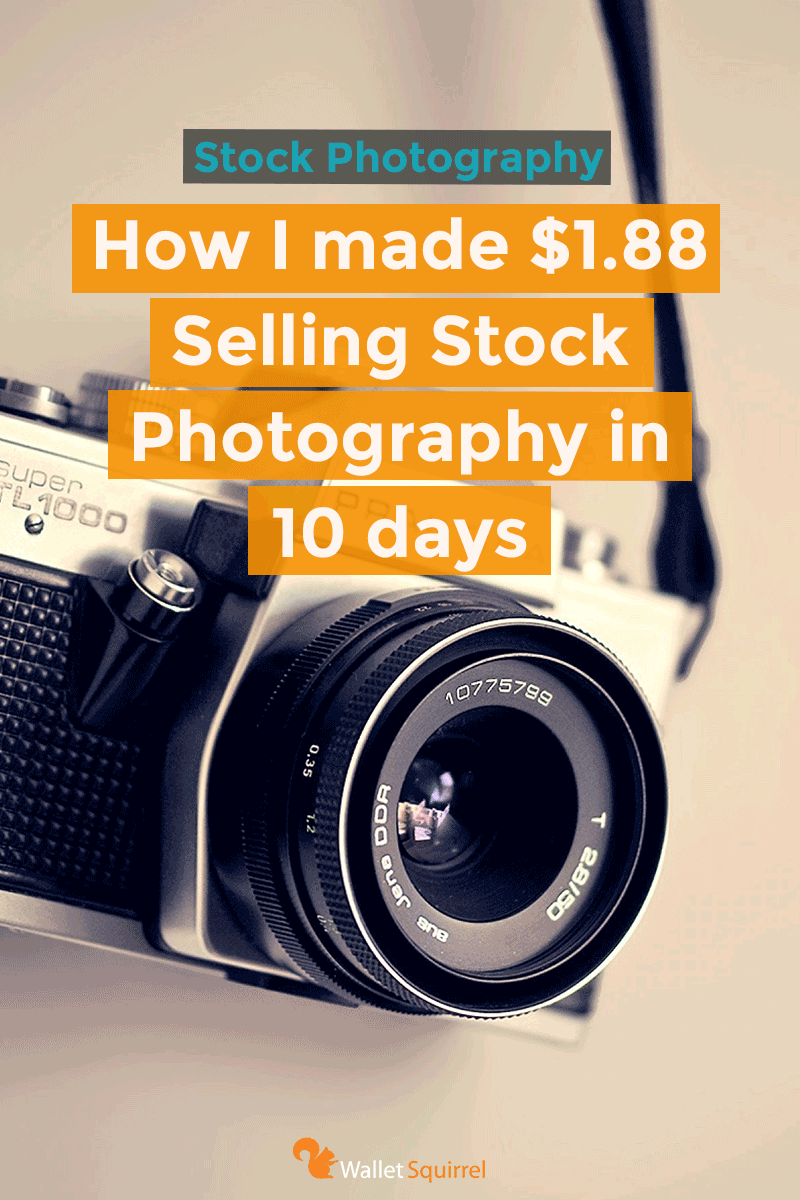Thinking about turning your photography, illustrations, or videos into a side hustle? Shutterstock is one of the biggest platforms out there, offering creative contributors a chance to showcase their work and earn money. Whether you’re a seasoned pro or just starting out, understanding how to navigate Shutterstock can open up new opportunities. In this post, we’ll walk through what you need to know as a first-time contributor, from getting started to making your first sale. Let’s dive into the world of stock image selling and see how you can turn your passion into profit!
Understanding Shutterstock’s Contributor Requirements

Before you start uploading your work, it’s essential to understand what Shutterstock expects from its contributors. They have specific requirements to ensure the quality and consistency of their library, which helps both buyers and sellers.
1. Content Quality: Shutterstock prioritizes high-quality images, videos, and illustrations. Your submissions should be technically sound, well-lit, sharply focused, and free of noise or distracting elements. Avoid heavily edited or overly stylized images unless they meet professional standards.
2. Content Types: You can submit a variety of media including photos, vectors, illustrations, and footage. Each has its own specifications, so make sure to review their guidelines for the specific type you’re uploading.
3. Legal and Model Releases: Your content must be legally cleared. If your images feature recognizable people, property, or private property, you’ll need to have signed model or property releases. Without these, your content may be rejected or removed.
4. Technical Specifications: Shutterstock has certain technical standards, such as:
- Minimum resolution: 4 megapixels for photos
- File formats: JPEG for images, MOV or MP4 for videos
- Color profile: sRGB for images
Make sure your files meet these standards to avoid rejection.
5. Originality and Compliance: All content must be original and not infringe on copyrights, trademarks, or third-party rights. Avoid submitting content that includes logos, branded products, or copyrighted artwork unless you have permission.
By understanding these requirements upfront, you’ll be better prepared to create and submit content that has a higher chance of acceptance. Quality and compliance are key to building a successful portfolio on Shutterstock.
Preparing Your Content for Submission
Before you hit that submit button on Shutterstock, it’s super important to make sure your content is polished and ready to impress. Think of it like preparing a gift—you want it to look as appealing as possible so it catches the eye of buyers. First off, quality is key. Your images and videos should be high resolution, sharp, and free of any distracting elements or imperfections. Use editing tools to crop, straighten, and adjust brightness or contrast to make your work stand out.
Next, pay close attention to the technical specifications. Each type of content has specific requirements—like dimensions, file formats, and size limits. For photos, JPEGs are usually the way to go, and they need to be saved at the highest quality possible without exceeding Shutterstock’s maximum file size. For videos, formats like MP4 are common, with recommended resolutions to match the platform’s standards.
It’s also a good idea to double-check your content for consistency and uniqueness. Shutterstock prefers original work that hasn’t been seen elsewhere. If you’re using models or recognizable locations, make sure you have proper releases and permissions. This not only keeps you compliant but also speeds up the approval process.
Finally, take time to review your metadata—this includes your title, description, and keywords. Craft these thoughtfully; they’re your best chance to help potential buyers find your content. Use descriptive, accurate keywords that reflect what’s in the image or video, and avoid keyword stuffing. The goal is to make your content discoverable without misleading anyone.
Uploading and Tagging Your Files Effectively
Once your content is prepped and ready, it’s time to upload! Shutterstock’s upload process is straightforward, but a few tips can help you do it smoothly and set yourself up for success. First, organize your files on your computer—name them clearly and keep track of which ones are ready for submission. This saves you a lot of hassle during the upload process.
When you upload your files, make sure to select the correct categories and content types. This helps Shutterstock understand what your work is and where it should appear. Take your time filling out the metadata: your title, description, and most importantly, keywords. Be specific and relevant. For example, instead of just “flower,” use “red tulip blossom in spring”—more descriptive keywords improve your chances of appearing in relevant searches.
Here are some effective tagging tips:
- Use all available keyword slots—more keywords mean a broader reach.
- Include synonyms and related terms—this catches different search queries.
- Avoid overstuffing—stick to relevant tags to maintain quality and relevancy.
- Think like a buyer—what words would someone use to find your content?
Another helpful trick is to use the “batch upload” feature if you have lots of similar files. This can save you time and keep your uploads organized. After uploading, review your entries to ensure everything looks correct before submitting. Once you’re satisfied, hit submit and wait for the review process. If your content gets approved, you’re officially on your way to earning from your creative efforts!
Optimizing Your Portfolio for Better Visibility
So, you’ve uploaded some great images and you’re eager to see your work get noticed. But with thousands of contributors and millions of assets on Shutterstock, how do you make sure your portfolio stands out? The answer is all about optimization — making your work easily discoverable and appealing to buyers.
First things first, focus on the quality of your images. Shutterstock emphasizes high-resolution, well-composed, and professionally shot photos. Avoid blurry or poorly lit shots; instead, aim for clarity and visual impact. Think about what buyers might be searching for — whether it’s a vibrant cityscape, a cozy lifestyle shot, or a sleek vector graphic. Your images should be relevant, sharp, and compelling.
Next, optimize your metadata. Metadata includes titles, descriptions, and keywords — and this is where most contributors can boost their visibility. Use clear, descriptive titles that accurately reflect the content of your image. For example, instead of “Beautiful Scene,” go for “Sunset over Mountain Lake with Reflection.” Your descriptions should elaborate on what’s in the image, adding context that helps buyers understand and envision its use.
Keywords are particularly important. Be thorough and strategic — include relevant terms, synonyms, and related concepts. Think about what a buyer might search for: colors, emotions, locations, activities, or concepts depicted. Use all available keyword slots and avoid vague or irrelevant tags. The more precise and comprehensive your keywords, the higher the chances of your images appearing in search results.
Another tip is to organize your portfolio into thematic collections or categories. This not only helps you manage your work but also makes it easier for buyers to find related images. Consider creating portfolios around specific themes such as “Business & Technology,” “Nature & Landscapes,” or “Creative Vectors.” Proper categorization improves your overall visibility on the platform.
Finally, stay active and update your portfolio regularly. Upload new content consistently, promote your best work externally if appropriate, and keep an eye on trending topics. Shutterstock’s algorithm favors fresh and relevant content, so continuous improvement and optimization are key to gaining better visibility over time.
Best Practices for Increasing Your Sales
Getting your images noticed is great, but converting that visibility into sales is the real goal. Here are some tried-and-true best practices to help boost your earnings on Shutterstock:
1. Focus on Popular and Evergreen Topics: While niche content can be profitable, don’t overlook the power of broad, evergreen themes. Think of images related to business, health, technology, or travel — these tend to have consistent demand. Keeping an eye on trending topics can also give you a boost, so stay updated with industry news and popular culture.
2. Offer a Variety of Content: Diversify your portfolio with different types of assets — photos, vectors, illustrations, and videos. Different buyers have different needs, and offering multiple formats increases your chances of making sales. For example, some clients prefer vectors for customization, while others want high-quality photos.
3. Use Effective Keywords and Descriptions: As I mentioned earlier, good metadata is crucial. But it’s worth reiterating — invest time in researching keywords that are popular and relevant. Use tools like Google Trends or Shutterstock’s own search suggestions to find trending search terms that align with your content.
4. Price Your Assets Strategically: While Shutterstock sets standard pricing, there’s some flexibility. When submitting content, ensure your images are high quality to justify premium pricing. Also, keep an eye on your portfolio’s performance and consider adjusting your submission choices based on what sells best.
5. Promote Your Work Outside Shutterstock: Share your best images on social media, your personal website, or blogs. Building a personal brand helps attract more views and potential clients. Engage with other creators and participate in forums — networking can lead to collaborations and increased exposure.
6. Keep Improving Your Skills: Invest in learning new techniques, editing tools, and trends. The more professional and current your work looks, the more likely it is to attract buyers. Participate in tutorials, workshops, or online courses to stay ahead of the curve.
Remember, patience and persistence are key. The more you refine your process, optimize your portfolio, and actively promote your work, the more your sales will grow. Happy contributing!
Common Mistakes to Avoid as a First-Time Contributor
Starting out on Shutterstock can be exciting, but it’s easy to make some common mistakes that might hold you back from success. Don’t worry—being aware of these pitfalls can help you steer clear of them and build a stronger portfolio from the get-go.
First off, one of the biggest mistakes is submitting low-quality images. Remember, quality always trumps quantity. Shutterstock is a professional platform, so ensure your photos are sharp, well-lit, and properly composed. Blurry, poorly lit, or heavily edited images can get rejected or, worse, harm your reputation.
Another common mistake is not following the submission guidelines. Each image must meet specific technical requirements—like resolution, file size, and keywording standards. Failing to adhere to these can result in rejections or delays in approval. Take the time to read Shutterstock’s contributor guidelines thoroughly before uploading.
Overloading your portfolio with similar images or niche topics without variety can also limit your exposure. While it’s great to specialize, having a diverse collection of images increases your chances of getting sales. Think about different themes, styles, and subjects that are in demand.
Keywording is crucial—yet often overlooked. Using sparse or irrelevant keywords can make your images hard to find. Be descriptive and specific, including relevant keywords that accurately reflect your image content. This improves discoverability and boosts your chances of making sales.
Additionally, don’t ignore trends. Shutterstock frequently updates its popular themes—think seasonal images, current events, or emerging styles. Keep an eye on trending topics and incorporate them into your portfolio to stay relevant.
Finally, be patient. Building a successful contributor profile takes time. Avoid the temptation to upload everything at once or get discouraged if sales are slow initially. Consistency, quality, and learning from feedback are key to long-term success.
Conclusion and Next Steps for Successful Selling on Shutterstock
Congratulations! You’ve now got a solid understanding of how to start your journey as a Shutterstock contributor. Remember, success doesn’t happen overnight, but with dedication, quality work, and strategic thinking, you can build a thriving portfolio.
To recap, here are some actionable next steps:
- Focus on quality: Always upload high-resolution, well-composed images that meet technical standards.
- Follow guidelines: Read and adhere to Shutterstock’s submission rules and keywording best practices.
- Diversify your portfolio: Cover a range of subjects, styles, and themes to attract different buyers.
- Stay trendy: Keep an eye on current market trends and seasonal opportunities.
- Optimize keywords: Use detailed, relevant keywords to improve your images’ visibility.
- Be patient and consistent: Regular uploads and continuous learning will gradually increase your sales.
Lastly, don’t forget to engage with the Shutterstock contributor community. Join forums, read blogs, and participate in webinars if available. Sharing experiences and tips can provide valuable insights and keep you motivated.
So, take the first step today—upload your best work, stay committed, and watch your contributor journey flourish. Happy selling!


